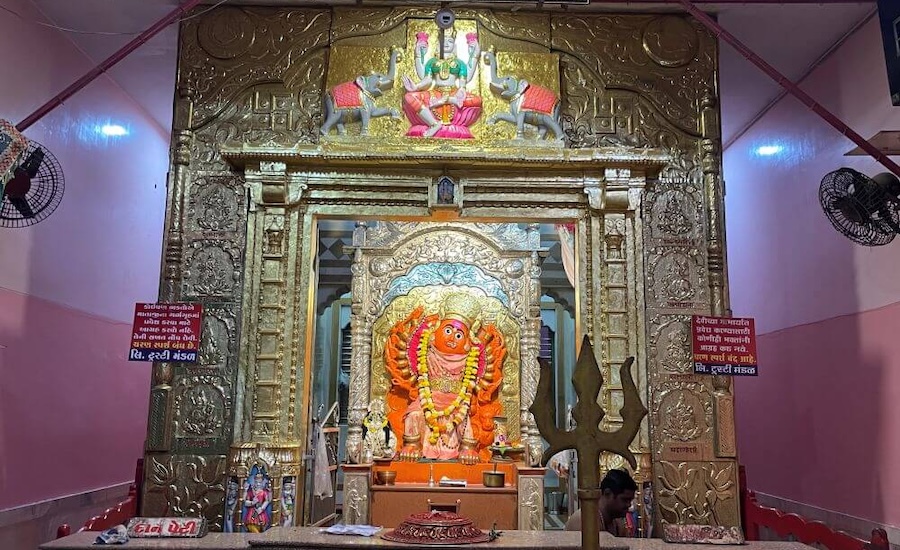
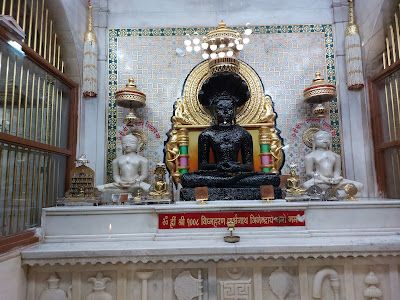 The Vighnahar Parshvanath Digambar Jain Temple, located in Mahuva village (historically known as Madhukanagar or Madhupuri), is a significant pilgrimage site revered by devotees. It is considered to be approximately a thousand years old. The temple houses ancient idols from the 11th and 12th centuries and has been a prominent spiritual center for Jain monks and devotees for centuries. It is believed that Lord Parshvanath, enshrined here, fulfils the wishes of devotees, attracting not only Jains but also people from other faiths.
The Vighnahar Parshvanath Digambar Jain Temple, located in Mahuva village (historically known as Madhukanagar or Madhupuri), is a significant pilgrimage site revered by devotees. It is considered to be approximately a thousand years old. The temple houses ancient idols from the 11th and 12th centuries and has been a prominent spiritual center for Jain monks and devotees for centuries. It is believed that Lord Parshvanath, enshrined here, fulfils the wishes of devotees, attracting not only Jains but also people from other faiths.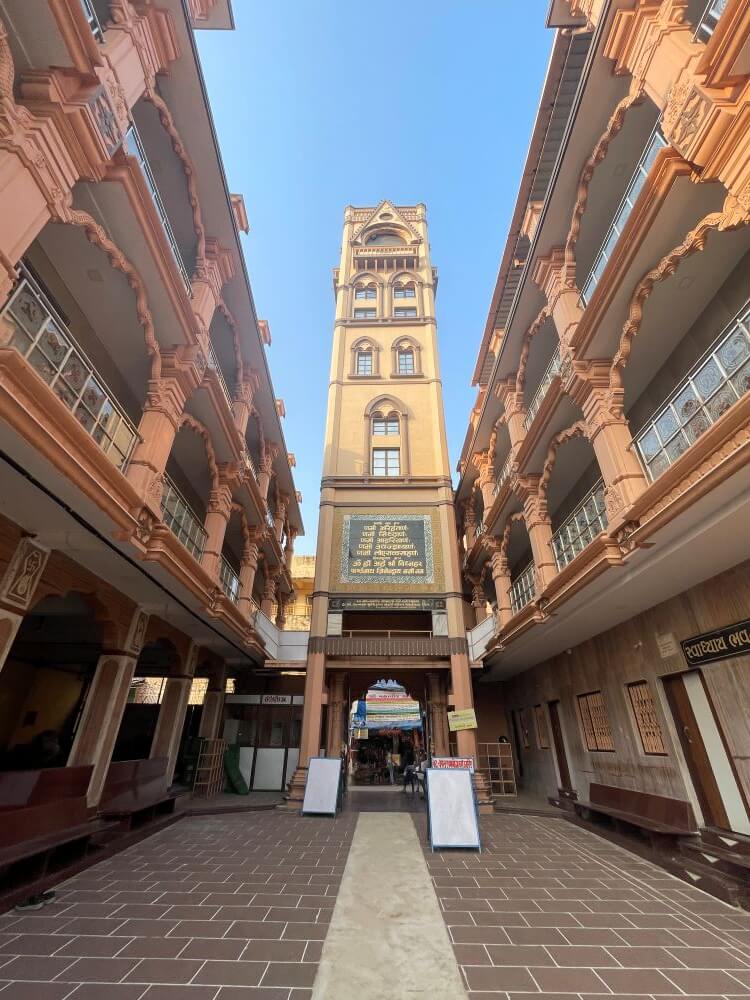
Mahuva, situated on the banks of the Purna River, was historically a centre of learning. According to Balbhadra Jain’s book ‘Bharat Ke Digambar Jain Teerth’, published by the All India Digambar Jain Association, this place had a notable literary and spiritual presence. In 1592 CE, Bhattarak Vadicandra, a disciple of Bhattarak Prabhakar of the Saraswati Gaccha lineage, composed the play ‘Gyana Suryodaya’ here. The final verse of the play indicates it was completed in Samvat 1648 on Magha Shukla Ashtami at Madhukanagar. Additionally, the text ‘Parshvanath Jayamala’ mentions Lord Parshvanath of Mahuva, reinforcing the site’s antiquity. Initially, this place was known for the Shri 1008 Lord Chandraprabhu Digambar Jain Temple. Over time, a Parshvanath idol was installed, marking its transformation into the current pilgrimage site.
The legend of the Parshvanath idol is intriguing. It is said that two prominent merchants from Mahuva, Dahyabhai and Kayabhai, had identical dreams one night. In their dreams, a divine figure revealed that an idol of Lord Parshvanath was buried in Tulwa, a village in the Sultanabad region of Khandesh. Acting on this vision, the brothers travelled to Tulwa, excavated the location, and discovered a beautiful idol of Lord Parshvanath. They transported the idol to Mahuva, where it was consecrated in the Chandraprabhu Temple by Bhattarak Vidyanandi Ji.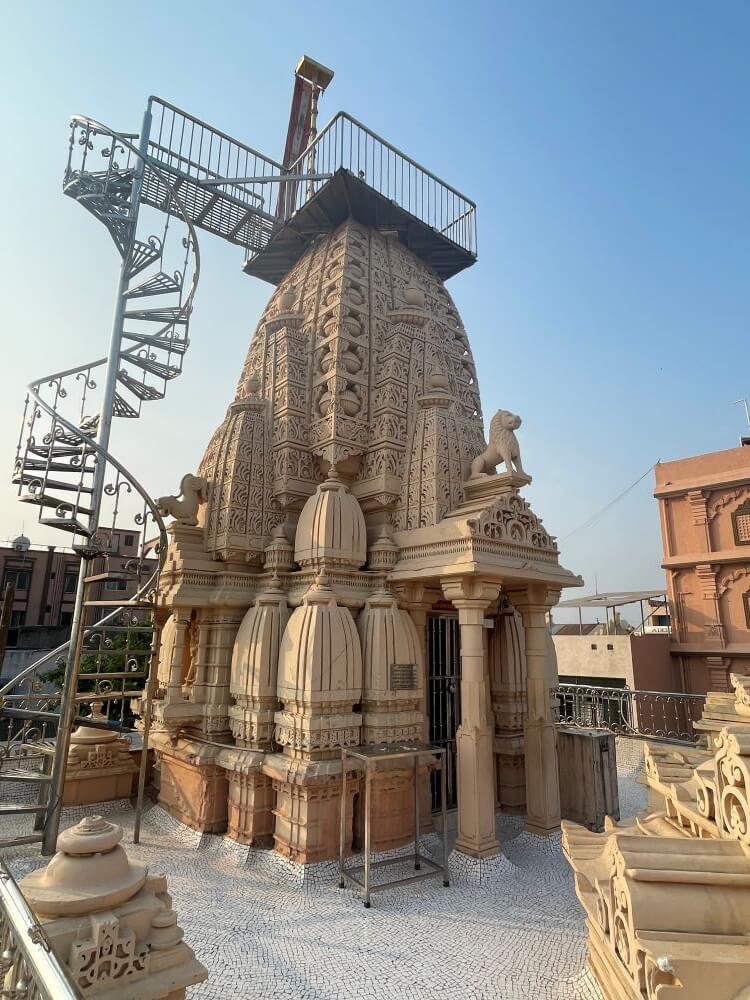
Another tale suggests that a farmer from Sultanabad found the idol while ploughing his field and kept it in his home for some time. Upon learning about it, the Jain community brought the idol to Mahuva. The chariot carrying the idol halted at Mahuva, leading to its placement in the temple’s underground sanctum. Over time, the idol gained fame for its miraculous powers, attracting devotees from far and wide.
The temple has faced three major natural calamities in its history. In 1929, a fire engulfed 10 houses near the temple, damaging the intricately carved wooden structure of the Chandraprabhu and Parshvanath shrines. Later, floods in 1968 and 1970 from the Purna River caused additional damage. Despite these challenges, the idols remained unharmed. The temple was subsequently renovated, with contributions from Jain devotees across Mumbai, Surat, and other cities, resulting in the construction of a magnificent Shikharbandh (spire-topped) temple.
The entrance of the temple is constructed with intricately carved red stone pillars. On either side of the entrance, the boundary walls of the temple feature majestic, colourful statues of royal elephants (Gajarajas), symbolising prosperity and grandeur. Above the gateway stands an imposing five-storey pillar-like structure, adding to the temple’s architectural magnificence. As one enters through this gateway, two four-storey buildings housing pilgrim accommodations (Dharmashalas) are visible on either side. Moving further, visitors arrive at a spacious courtyard that includes a drinking water facility (Pyau).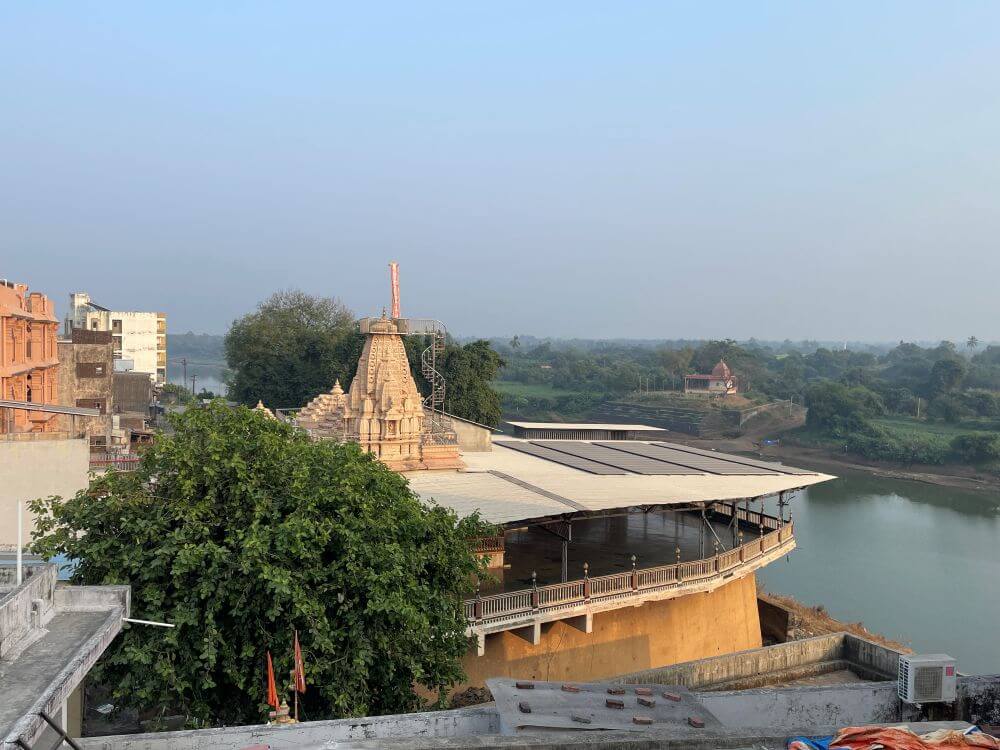
At the heart of the courtyard lies the main temple structure, which is elevated on a prominent platform (Jagati). The temple is divided into three distinct sections: the Mukhamandapa (entrance porch), the Rangamandapa (assembly hall), and the Garbha Griha (sanctum). Ascending ten steps leads to the Mukhamandapa, which is adorned with intricately carved pillars featuring decorative Makara Toranas (arched carvings often depicting mythical crocodile-like creatures). These pillars are further embellished with sculptures of celestial maidens (Surasundaris), showcasing fine craftsmanship.
At the base of the pillars, statues of guardian deities (Dwarapalas) stand in watchful posture, enhancing the sacred atmosphere.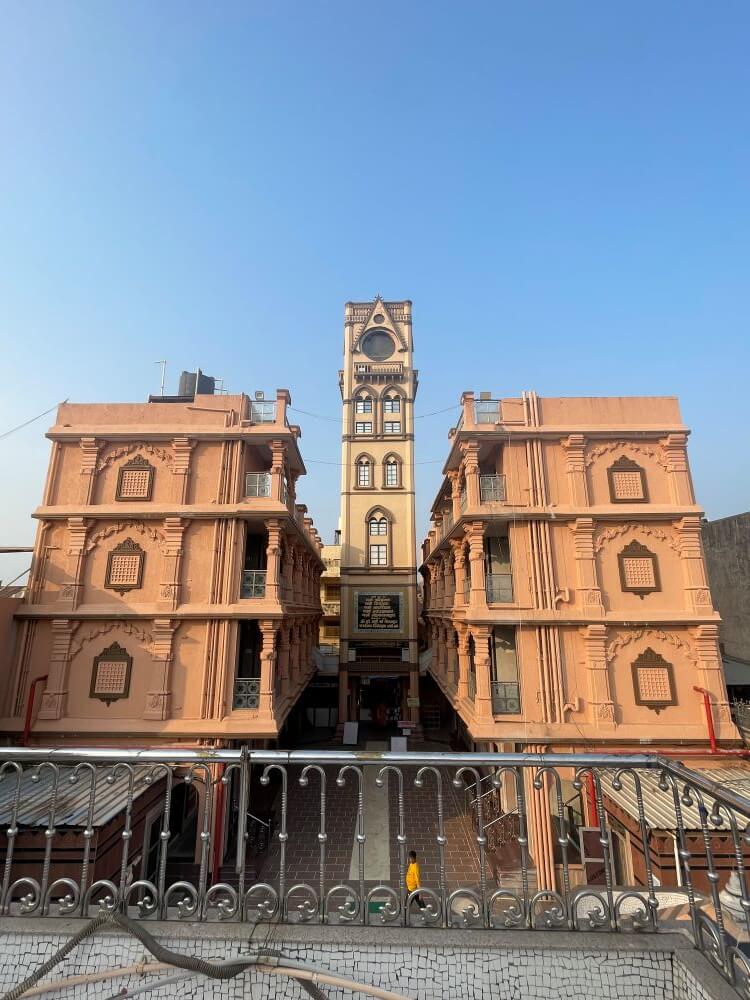 Adjacent to the Mukhamandapa, on the right side, a niche on the outer wall of the Rangamandapa houses a striking black stone idol of Lord Parshvanath.
Adjacent to the Mukhamandapa, on the right side, a niche on the outer wall of the Rangamandapa houses a striking black stone idol of Lord Parshvanath.
The Rangamandapa (assembly hall) entrance is adorned with intricately carved door frames (Dwarshakhas), showcasing artistic detail. At the base of these frames, beautiful sculptures of guardian deities (Dwarapalas) and attendant maidens (Sevikas) are carved, adding to the temple’s grandeur. The Rangamandapa itself is spacious and supported by numerous elaborately carved pillars, each reflecting fine craftsmanship.
Upon entering the Rangamandapa, the sanctum (Garbha Griha) is located on the right. On the outer wall of the Rangamandapa, niches (Devakoshtaks) house sacred idols. Among them is the Shendurcharchit (vermillion-adorned) idol of Kshetrapal Dev (the guardian deity of the region) and the idol of Goddess Padmavati, who is considered the protective deity (Shashan Devi) of Lord Parshvanath.
The Garbha Griha has three entrances. Entering through the central main door, one is greeted with a magnificent marble idol of Lord Chandraprabhu, seated in a lotus pose (Padmasana) on a lotus pedestal (Kamalapushpa). Lord Chandraprabhu, the eighth Tirthankara, is symbolised by the crescent moon (Chandra).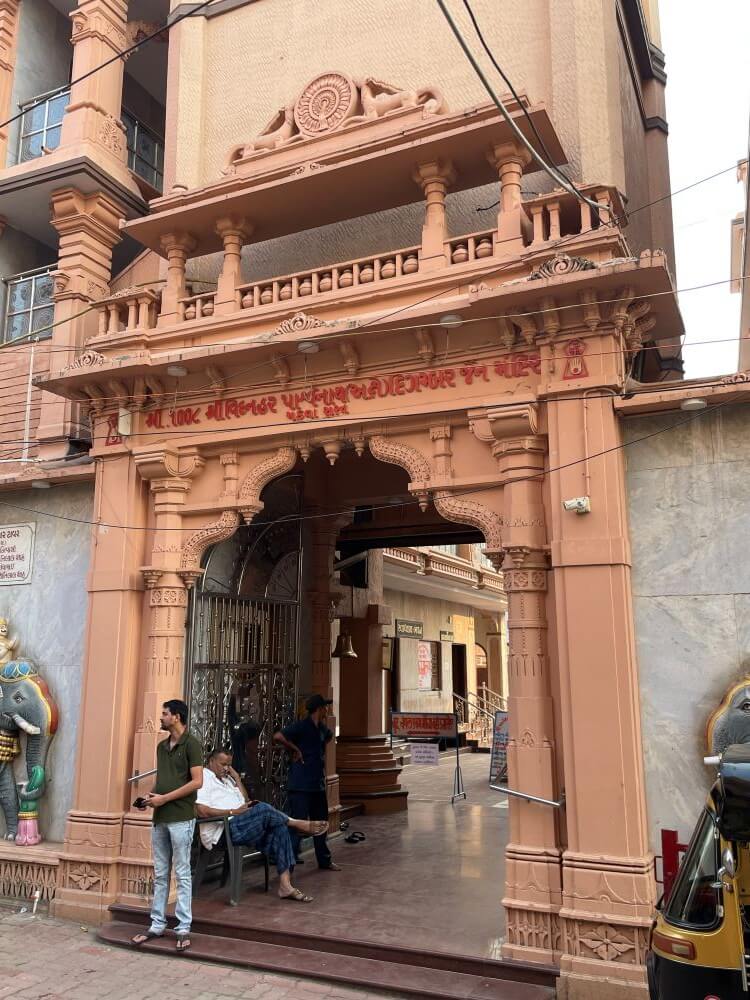 Above the idol are three umbrellas (Chhatras), representing his dominion over the three realms—Adholok (the lower world), Madhyalok (the middle world), and Devalok (the celestial world).
Above the idol are three umbrellas (Chhatras), representing his dominion over the three realms—Adholok (the lower world), Madhyalok (the middle world), and Devalok (the celestial world).
The right-side entrance offers a view of Lord Adinath, the first Tirthankara. Returning to the left-side entrance, devotees once again experience the serene presence of Lord Chandraprabhu. All the idols in the sanctum are placed on a single horizontal marble pedestal. Alongside these, the sanctum also houses stone and metallic idols of other Tirthankaras.
This temple features an expansive and majestic underground chamber (Talghar), accessible via a staircase descending from the Rangamandapa. Within this subterranean sanctum (Garbha Griha), a grand black-sandstone idol of Lord Parshvanath is enshrined on an elevated pedestal. The idol is depicted in a serene lotus pose (Padmasana), with a seven-hooded serpent (Saptaphanadhari Nagraja) forming a protective canopy above the deity’s head.
To the right of Lord Parshvanath’s idol is the image of the 16th Tirthankara, Lord Shantinath, while to the left is the idol of Lord Chandraprabhu, the 8th Tirthankara. The idol of Lord Chandraprabhu was consecrated in 1592 CE, making it a historically significant artefact. On the same pedestal, other idols of Tirthankaras are arranged in the front row. 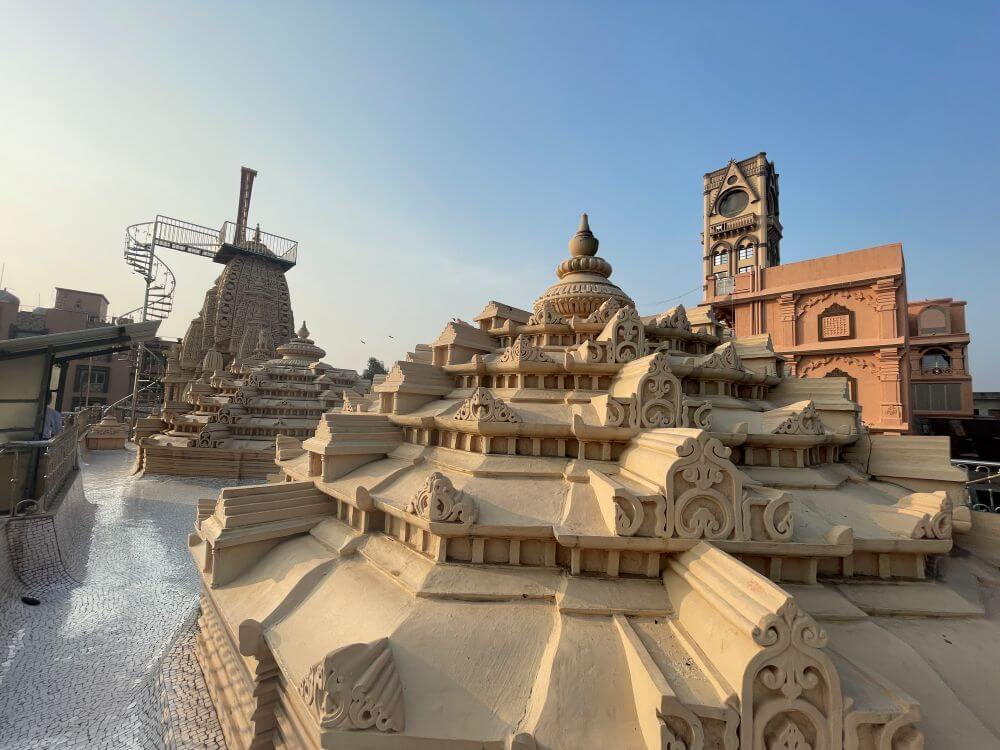 Among them are a 7.5-inch metal idol of Lord Mahavira and a 5-inch idol of Lord Parshvanath, both of great devotional importance.
Among them are a 7.5-inch metal idol of Lord Mahavira and a 5-inch idol of Lord Parshvanath, both of great devotional importance.
Encircling the sanctum is a circumambulatory path (Pradakshina Marg). Along this path, in the left corner, stands a marble idol of Lord Bharatnath, while on the right is an image of Lord Bahubali in a meditative Kayotsarga posture. At the rear of the sanctum, embedded in the wall, is a niche (Devli) where devotees attach coins, believing that if the coin sticks, their heartfelt wishes will be fulfilled.
In one of the chambers of the underground sanctum, there are 23 stone idols and 29 metal idols preserved. According to inscriptions carved on the pedestals of some of these idols, they date back to 1334 CE, 1466 CE, 1479 CE, 1492 CE, 1558 CE, 1605 CE, 1609 CE, 1771 CE, and 1855 CE. Among these, the idols of Lord Adinath and Goddess Padmavati hold special significance.
Among these, the idols of Lord Adinath and Goddess Padmavati hold special significance.
The idol of Lord Adinath, standing 4.5 feet tall, is sculpted on a monolithic stone slab (Shilaphalaka). The idol depicts Lord Adinath in the Khagdasana (standing posture), although the upper part of the canopy (Chhatra) above the idol is partially damaged. On either side of the idol’s head, celestial couples (Gandharvas) are carved holding garlands. Behind the main figure are rows of 11 miniature idols in the Padmasana posture. Below, at the base of the idol, are additional figures in Khagdasana. On both sides of the idol’s feet, there are carved figures of devotees with folded hands, accompanied by images of Yaksha (male celestial beings) and Yakshi (female celestial beings).  The stone slab also features a goddess seated on a throne in a graceful Lalitasana pose. Based on its intricate sculptural style, this idol is believed to belong to the 11th or 12th century.
The stone slab also features a goddess seated on a throne in a graceful Lalitasana pose. Based on its intricate sculptural style, this idol is believed to belong to the 11th or 12th century.
The idol of Goddess Padmavati is 2 feet 1 inch in height and dates back to 1771 CE. The idol showcases the goddess with an elaborate canopy above her head, where Lord Parshvanath is enshrined.
Other chambers within the underground sanctum also house similar idols. Many of these are believed to have been recovered from the floodwaters of the Purna River over the centuries. These artefacts are not only significant for their artistry but also as remnants of Jain history and devotion, attracting scholars and devotees alike.
One of the unique features of this temple is that it is a Shikharbandh temple, meaning the temple itself extends into the spire (Shikhar). On the roof of this temple, there are three spires in total. Two of these spires are of relatively lesser height and adorned with intricate carvings. At the apex of these spires are the traditional Amalaka (a stone disc-like ornament) and Kalash (finial). The third spire, however, houses an actual temple within itself.
This temple includes a small Mukhamandap (entrance hall) and a sanctum (Garbha-Griha). On the roof of the Mukhamandap, a beautifully sculpted lion statue is installed. Inside the sanctum resides a marble idol of Lord Adinath in the Kayotsarga posture (a meditative standing posture). Thus, this temple uniquely enshrines deities at three different levels: Lord Parshvanath in the underground sanctum, Lord Chandraprabhu on the main floor, and Lord Adinath at the pinnacle temple within the spire. One side of the main idol in this pinnacle temple features the sacred symbol “Om” inscribed in large letters, while the other side displays the sacred syllable “Hreem.” This symbol is intricately designed with depictions of the 24 Tirthankaras (enlightened spiritual teachers in Jainism). The inner walls of the sanctum are adorned with murals depicting significant events from the life of Lord Adinath.
This temple, revered by both Jains and Hindus, is considered a centre of faith and devotion. The idol of Lord Parshvanath housed here is believed to be miraculous (Atishaykari), performing wonders and fulfilling devotees’ wishes. For this reason, the temple is also referred to as an Atishay Kshetra (a miraculous site). Devotees firmly believe that Lord Parshvanath here grants their prayers and fulfills their vows. Many farmers from the surrounding areas express their gratitude by offering the first harvest of their crops or vegetables to Lord Parshvanath.
Adjacent to the main temple is a spacious hall, where various religious festivals, discourses, and spiritual programmes are organised. This hall serves as a vital gathering space for the community, enhancing the temple’s role as a centre for both devotion and social interaction.
